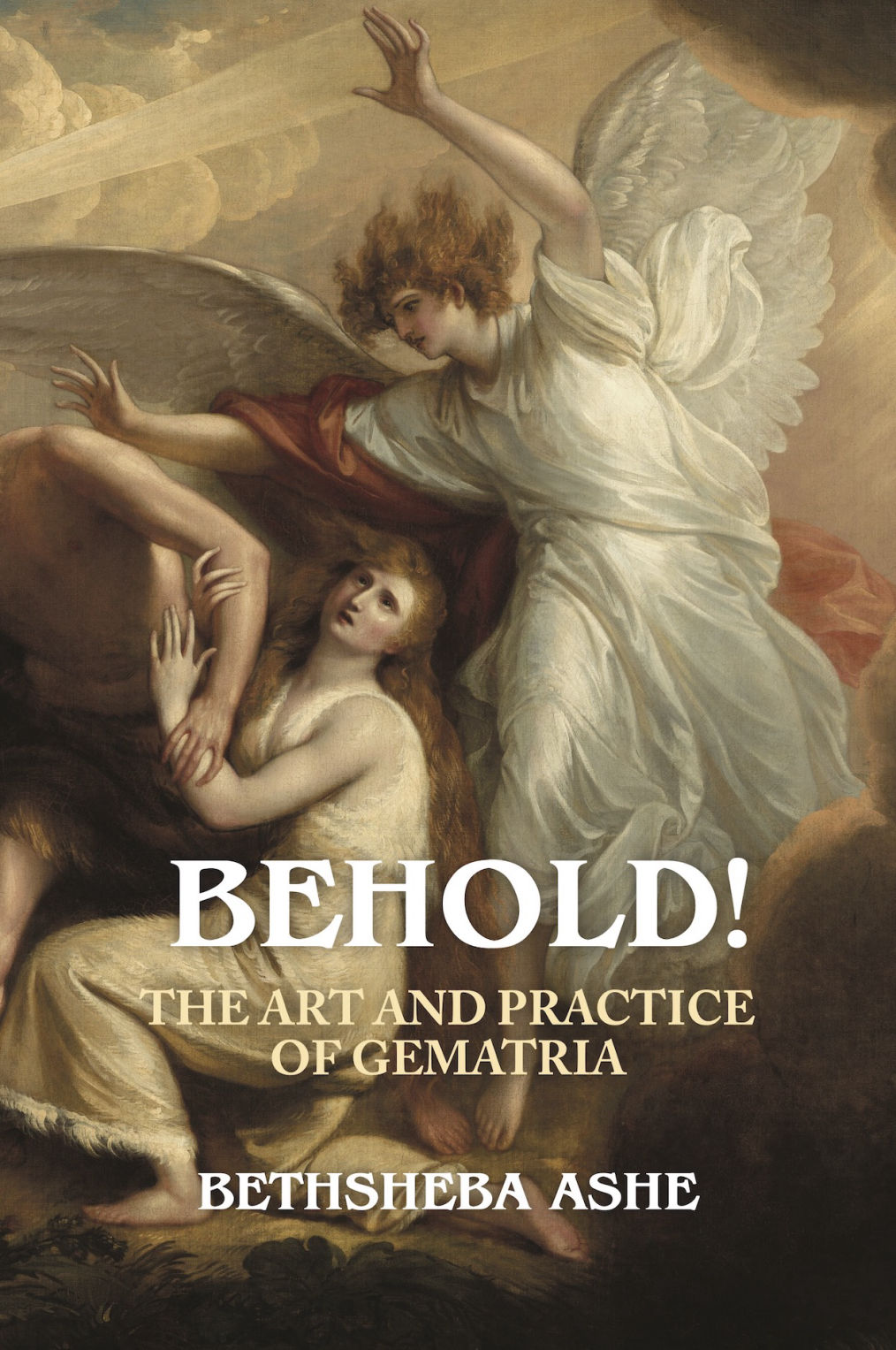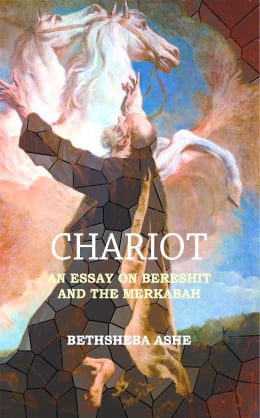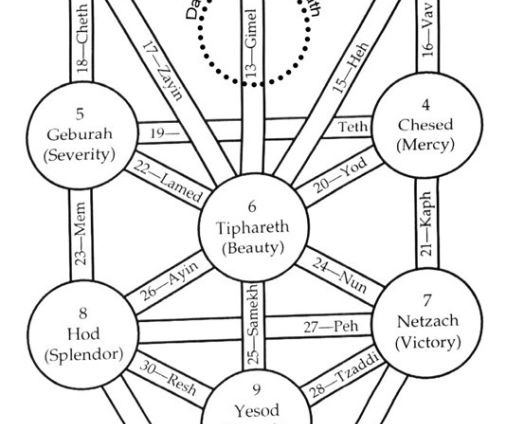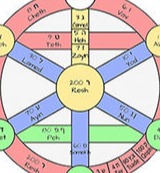Words and Calculations with the same Gematria value ...
| Word | Translation & Meaning | Transliteration | Strong's Number |
|---|
| אורה | Meaning: luminousness, i. e. (figuratively) prosperity; also a plant (as being bright). Usage: herb, light. | AVRH | 219 |
| אורה | Meaning: a stall. Usage: cote. | AVRH | 220 |
| ארוה | Meaning: a herding-place for an animal. Usage: stall. | ARVH | 723 |
| ברות | Meaning: the cypress (or some elastic tree). Usage: fir. | BRVTh | 1266 |
| ברות | Meaning: food. Usage: meat. | BRVTh | 1267 |
| ברי | Meaning: fat. Usage: fat. | BRI | 1274 |
| ברי | Meaning: Beri, an Israelite. Usage: Beri. | BRI | 1275 |
| ברי | Meaning: (only in the plural and with the article) the Berites, a place in Palestine. Usage: Berites. | BRI | 1276 |
| גדרה | Meaning: inclosure (especially for flocks). Usage: (sheep-) cote (fold) hedge, wall. | GDRH | 1448 |
| גדרה | Meaning: (with the article) Gederah, a place in Palestine. Usage: Gederah, hedges. | GDRH | 1449 |
| גזבר | Meaning: treasurer. Usage: treasurer. | GZBR | 1489 |
| גזבר | Meaning: Usage: treasurer. | GZBR | 1490 |
| גשור | Meaning: Geshur, a district of Syria. Usage: Geshur, Geshurite. | GShVR | 1650 |
| זהר | Meaning: to gleam; figuratively, to enlighten (by caution). Usage: admonish, shine, teach, (give) warn(-ing). | ZHR | 2094 |
| זהר | Meaning: (passively) be admonished. Usage: take heed. | ZHR | 2095 |
| זהר | Meaning: brilliancy. Usage: brightness. | ZHR | 2096 |
| זרה | Meaning: to toss about; by implication, to diffuse, winnow. Usage: cast away, compass, disperse, fan, scatter (away), spread, strew, winnow. | ZRH | 2219 |
| חדר | Meaning: properly, to inclose (as a room), i. e. (by analogy,) to beset (as in a siege). Usage: enter a privy chamber. | ChDR | 2314 |
| חדר | Meaning: an apartment (usually literal). Usage: ((bed) inner) chamber, innermost(-ward) part, parlour, south, × within. | ChDR | 2315 |
| חדר | Meaning: Chadar, an Ishmaelite. Usage: Hadar. | ChDR | 2316 |
| חרד | Meaning: to shudder with terror; hence, to fear; also to hasten (with anxiety). Usage: be (make) afraid, be careful, discomfit, fray (away), quake, tremble. | ChRD | 2729 |
| חרד | Meaning: fearful; also reverential. Usage: afraid, trembling. | ChRD | 2730 |
| חרשא | Meaning: Charsha, one of the Nethinim. Usage: Harsha. | ChRShA | 2797 |
| חרת | Meaning: to engrave. Usage: graven. | ChRTh | 2801 |
| חרת | Meaning: Chereth, a thicket in Palestine. Usage: Hereth. | ChRTh | 2802 |
| חתר | Meaning: to force a passage, as by burglary; figuratively, with oars. Usage: dig (through), row. | ChThR | 2864 |
| ירב | Meaning: Jareb, a symbolical name for Assyria. Usage: Jareb. | IRB | 3377 |
| צבעים | Meaning: Tseboim, a place in Palestine. Usage: Zeboim. | TsBOIM | 6650 |
| צלפחד | Meaning: Tselophchad, an Israelite. Usage: Zelophehad. | TsLPChD | 6765 |
| קו־קו | Meaning: stalwart. Usage: × meted out. | QVQV | 6978 |
| ראוה | Meaning: sight, i. e. satisfaction. Usage: behold. | RAVH | 7207 |
| רזה | Meaning: to emaciate, i. e. make (become) thin (literally or figuratively). Usage: famish, wax lean. | RZH | 7329 |
| רזה | Meaning: thin. Usage: lean. | RZH | 7330 |
| רחת | Meaning: a winnowing-fork (as blowing the chaff away). Usage: shovel. | RChTh | 7371 |
| רטש | Meaning: to dash down. Usage: dash (in pieces). | RTSh | 7376 |
| ריב | Meaning: properly, to toss, i. e. grapple; mostly figuratively, to wrangle, i. e. hold a controversy; (by implication) to defend. Usage: adversary, chide, complain, contend, debate, × ever, × lay wait, plead, rebuke, strive, × thoroughly. | RIB | 7378 |
| ריב | Meaning: a contest (personal or legal). Usage: adversary, cause, chiding, contend(-tion), controversy, multitude (from the margin), pleading, strife, strive(-ing), suit. | RIB | 7379 |
| רתח | Meaning: to boil. Usage: boil. | RThCh | 7570 |
| רתח | Meaning: a boiling. Usage: × (boil) well. | RThCh | 7571 |
| שדרה | Meaning: a row, i. e. rank (of soldiers), story (of rooms). Usage: board, range. | ShDRH | 7713 |
| שטר | Meaning: a side. Usage: side. | ShTR | 7859 |
| שטר | Meaning: properly, a scribe, i. e. (by analogy or implication) an official superintendent or magistrate. Usage: officer, overseer, ruler. | ShTR | 7860 |
| שרוג | Meaning: Serug, a postdiluvian patriarch. Usage: Serug. | ShRVG | 8286 |
| שרט | Meaning: to gash. Usage: cut in pieces, make [cuttings] pieces. | ShRT | 8295 |
| שרט | Meaning: an incision. Usage: cutting. | ShRT | 8296 |
| שרשו | Meaning: eradication, i. e. (figuratively) exile. Usage: banishment. | ShRShV | 8332 |
| תבור | Meaning: Tabor, a mountain in Palestine, also a city adjacent. Usage: Tabor. | ThBVR | 8396 |
| תגרה | Meaning: strife, i. e. infliction. Usage: blow. | ThGRH | 8409 |
| תחפניס | Meaning: Tachpenes, an Egyptian woman. Usage: Tahpenes. | ThChPNIS | 8472 |
| תרח | Meaning: Terach, the father of Abraham; also a place in the Desert. Usage: Tarah, Terah. | ThRCh | 8646 |
| תרשתא | Meaning: the title of a Persian deputy or governor. Usage: Tirshatha. | ThRShThA | 8660 |





Please SHARE this PAGE!